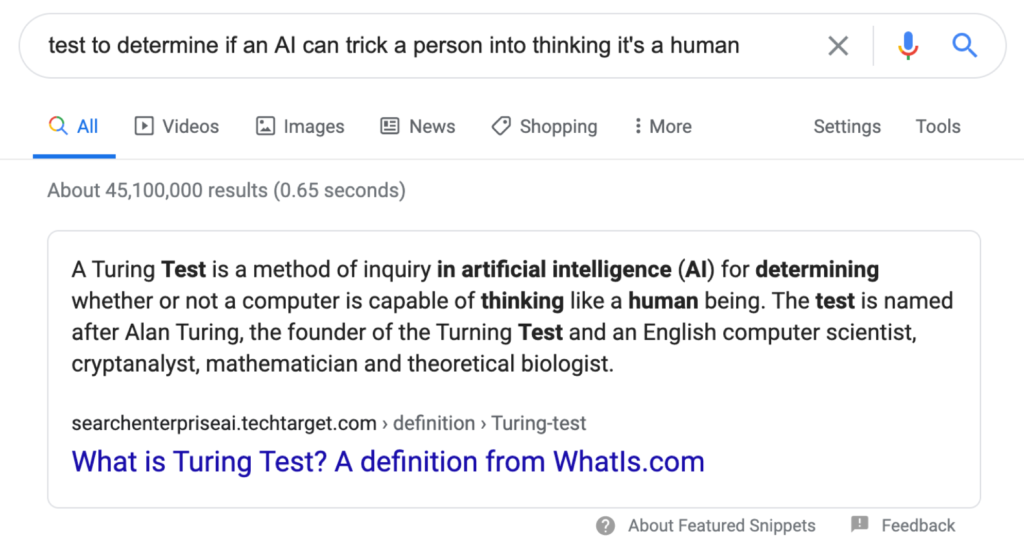
How Is AI Being Used in E-Learning in 2020?
Advanced computer programs are making further headway into online education: a look at where the field is headed.
Artificial intelligence, as a concept, is nearly as old as the computer itself. But its emergence as a tool with real-life applications is only a few decades old, and continues to evolve. Now, while we still wouldn’t say AI has become “mainstream,” it has become more common. Google now applies neural matching technology to roughly 30% of searches, voice searches are standard on all major smartphone operating systems, and social media platforms rely on AI to deliver content to users.
That said, the AI we encounter today is still a far cry from the self-aware, super-intelligent beings that science fiction authors are so fond of speculating about. The AIs we encounter while browsing the Internet or using our smartphones are what we would call “weak” or “narrow” AI. These are formed of algorithms with a limited function and little to no memory of the tasks they perform. They can be taught or trained to become better at their task, but they cannot make the leap from that task to something outside their programming.
Nevertheless, these programs are finding their way into the field of online education in various ways, and are only likely to do so more in the future. Here are six ways AI is currently being used in the e-learning industry today.
1. Learner accessibility.
One of the most positive effects of online education is to make learning more accessible to learners who might otherwise have struggled in an in-person classroom. AI is helping make learning even more accessible through programs that can use language processing algorithms to subtitle live speech, provide more dynamic descriptions of visual content, and act as a virtual assistant for learners who need help accessing course materials.
2. Chat bots.
In the decades since Alan Turing proposed a computer being able to trick a person into believing it was human as the standard for determining intelligent behavior, programmers have tried to engineer chat bots with the natural language abilities to do just that. While many are on the brink of success, most of us can still quickly tell when we’re talking to an AI rather than a person.
This doesn’t make them any less useful in education, however. Chat bots can still parse enough grammar to handle conversations with students, making them a promising educational tool. For instance, chat bots can answer questions from students, and grow more adept when they are used within a specialized branch of knowledge. They also have applications in language learning, and in training scenarios.
3. Virtual assistants.
Similar to chat bots, virtual assistants can aid learners and educators alike by fielding questions that might otherwise have gone to the professor, or by helping learners navigate course material. The idea of virtual tutors is also beginning to pick up, but so far there have been few examples of this being executed successfully.
4. Learning personalization.
AIs become more efficient as they gather more data inputs and learn how to respond based on how they are being used. In e-learning, AI can be used to deliver customized lessons to learners, changing the content itself to be more appealing.
For instance, an AI could learn from its user that they are a sports fan, and offer up examples of a concept being used in a real-life sporting example. Or it could pick up on learner interests, and use them to deliver customized vocabulary words as part of a language learning program.
5. Assessment and grading.
One of the biggest challenges of assigning written work is the time it takes to read and assess its quality. However, the better AI becomes at understanding the meaning behind written language, the more efficient it will become at grading exams.

Google’s neural matching is an example of machines becoming better capable of understanding the intent behind a search and delivering content accordingly. These capabilities are only going to become more fine-tuned in the future.
6. Anti-cheating detection.
Tools to detect plagiarism don’t usually need AI, but other forms of cheating detection do. For instance, AIs can use a sample of a student’s writing to detect idiosyncrasies, and can then extrapolate from that dataset to determine whether an assignment was completed by the student or by someone else.
Artificial intelligence programs are becoming increasingly accessible—and more useful.
Not long ago, the idea that anyone outside a governmental or enterprise-level organization could use AI to improve their online course seemed like the stuff of the future. However, just as artificial intelligence has begun playing a larger role in our day-to-day lives as consumers, it’s also becoming more accessible to educators.
While it’s still early days, AI is changing online education. From language learning courses such as Duolingo using AI to personalize learning experiences, to MOOCs using it to suggest new courses to students, online educators are finding ways to make it useful.
The more commonplace AI becomes, the more people will find innovative ways to put it to use. Educators should keep their eyes out for industry-disrupting use-cases—or maybe even consider becoming the disruptor themselves.

LearnDash Collaborator
@LearnDashLMS







